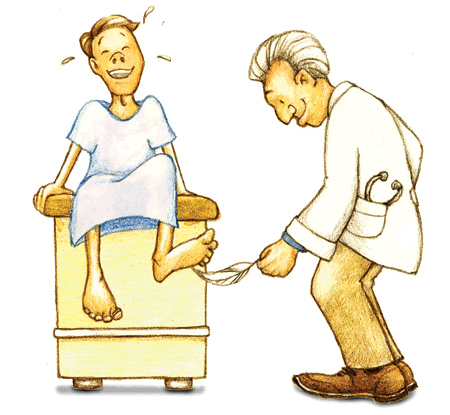Amputation Prevention Begins
with Vigilant Care
Joel Kowski, DPM, FACFAS
Podiatric Medicine
Foot and Ankle Clinic
Eau Claire
Every 30 seconds, a lower-limb is lost to diabetes. Those with diabetes are more prone to develop foot infections (foot ulcers), which can quickly result in amputation.
In addition to ulcers, common diabetes warning signs
in the feet include:
- A tingling or loss of feeling in the feet
- Redness
- A change in the shape of the feet
- Loss of hair
- Cuts and scrapes that are slow to heal
If you discover any of these symptoms, visit a podiatric physician immediately. Being vigilant in your personal foot care, and including your podiatrist in your diabetes management team, can save both your limbs and your life.

An amputation prevention checklist for those with diabetes:
do’s
- Inspect feet daily for cuts, blisters, scratches, redness and swelling.
- Remember to inform every doctor you visit that you have diabetes.
- Wash feet daily; always dry carefully between the toes.
- Powder feet lightly after bathing.
- Cut toenails straight across.
- Keep feet warm and dry.
- Use a skin lotion to protect your feet from cracking and drying,
but not between toes.
- Wear loose-fitting socks to bed if feet are cold; never use heating pads or hot water bottles.
- Wear comfortable, well-fitting shoes.
- Always inspect the inside of shoes for foreign objects
and torn lining before wearing.
don’ ts
- Don’t walk barefoot, even indoors!
- Don’t smoke. Smoking reduces blood circulation; this can lead
to the loss of a leg.
- Don’t cut corns or calluses yourself.
- Don’t use caustic chemicals or other irritants for the
removal of corns and calluses.
- Don’t wear open-toed shoes, particularly sandals with
thongs between toes.
A comprehensive foot care treatment plan can reduce amputation rates by 45 - 85 percent. Including a podiatrist on your diabetes management team can greatly improve your chances of managing diabetes successfully.
Q & A. Diabetes & the Feet
1. Why does my doctor ask me to take off my shoes and socks?
The feet are said to be mirrors of our general health. They can reveal diabetes warning signs. Inspecting your feet at every doctor’s visit is critical to the prevention and treatment of systemic diseases.
2. Who is at risk for diabetes?
Many Americans are predisposed to have diabetes, based on family history; however, Hispanics, African Americans, American Indians, Asian Americans and Pacific Islanders are more at risk. People with type 2 diabetes can lower their chances of getting the disease by exercising regularly, reducing fat and calorie intake and losing weight.
3. What can happen if diabetes is not detected in its early stages?
Many people do not find out they have the disease until they develop serious complications. The good news is that diabetes can be managed. However, if left undiagnosed or untreated, it can damage the body and result in long-term complications such as lower-limb amputations, cardiovascular disease, stroke, blindness and kidney disorders.
4. Should I see a podiatrist if I have diabetes?
Treating diabetes requires a team approach. A podiatrist is an integral part of the team. Your primary care provider may also refer you to a dietician, nurse educator, dentist, eye doctor and an exercise physiologist to help you manage the disease. Keeping your blood glucose (sugar) in good control and taking care of your feet every day can help you avoid serious foot problems.
For information on your feet and diabetes and the warning signs of diabetic ulcers visit www.apma.org/diabetes.
~ To schedule an appointment with Dr. Joel Kowski, Foot & Ankle Clinic, call: 800.359.4421. Dr. Kowski sees patients in Baldwin, Durand, Eau Claire, Menomonie, Neillsville, Stanley and Rice Lake.




